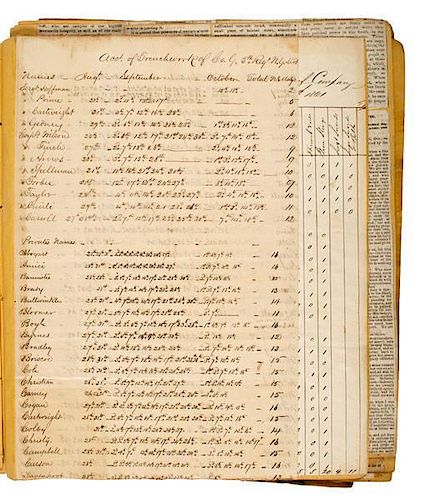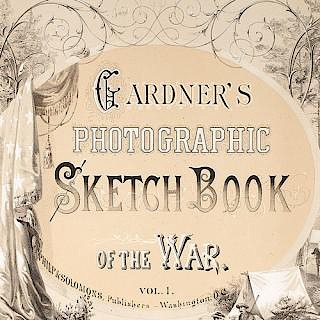Duryee's Zouaves, 5th New York Volunteers, Civil War-Era Scrapbook
About Seller
6270 Este Ave.
Cincinnati , OH 45232
United States
With offices in Cincinnati, Cleveland and Denver, Cowan’s holds over 40 auctions each year, with annual sales exceeding $16M. We reach buyers around the globe, and take pride in our reputation for integrity, customer service and great results. A full-service house, Cowan’s Auctions specializes in Am...Read more
Two ways to bid:
- Leave a max absentee bid and the platform will bid on your behalf up to your maximum bid during the live auction.
- Bid live during the auction and your bids will be submitted real-time to the auctioneer.
Bid Increments
| Price | Bid Increment |
|---|---|
| $0 | $25 |
| $500 | $50 |
| $1,000 | $100 |
| $2,000 | $250 |
| $5,000 | $500 |
| $10,000 | $1,000 |
| $20,000 | $2,500 |
| $50,000 | $5,000 |
| $100,000 | $10,000 |
About Auction
Nov 21, 2014 - Nov 22, 2014
Cowan's Auctions dawnie@cowans.com
- Lot Description
Duryee's Zouaves, 5th New York Volunteers, Civil War-Era Scrapbook
Large, folio-sized scrapbook of Civil War-era newspaper clippings and items associated with the 5th New York Volunteers, known as the National, or Duryee’s Zouaves.
Listed in Fox’s Fighting 300, Duryee’s Zouaves were recruited in New York City and surrounding boroughs as one of the earliest volunteer units to answer the call. They were famous for their discipline and esprit de corps. The 5th New York served in the one volunteer brigade in General Syke’s division of Regular Army troops, who proclaimed them one of the best volunteer units he ever saw. At Gaines Mill, where they lost one third of their complement, the regiment actually stopped while under heavy enemy fire, and dressed its lines before advancing. At Second Bull Run, the National Zouaves lost 117 of a total of 490 men killed or mortally wounded, 23 percent. This was the greatest loss of life by one regiment in any battle of the war.
This scrapbook, which is missing its front cover, contains 55+ pages of newspaper clippings, mostly following the war news in 1863, but also the 1864 and 1872 Presidential elections from a “liberal Republican” viewpoint. There are approximately two dozen handwritten and printed documents pertaining to the 5th New York, many of them regarding Companies “G” and “H”.
Noteworthy among these are 4 color illustrations of Ft. Federal Hill in Baltimore, showing several Zouaves in their distinctive uniforms; a copy of a furlough pass for 72-year-old Private Abraham D. Millis to return to Brooklyn to visit family (Millis served his full term and was mustered out with the regiment); records of various courts martial, primarily charges of AWOL; a daily time schedule for camp (reveille at 6:30am, etc).
One interesting court martial was against Private John McAnspie of “C” Co., for “placing a scurrilous placard” on the company bulletin board ridiculing his corporal, much to the enjoyment of the soldiers. He was docked 15 days’ pay, and forced to march in front of the guard post for 5 hours a day for 15 days with 30 pounds of rocks in his backpack, and limited to bread and water.
The last section of the scrapbook contains a very large section of fold-out maps from the New York Herald, of July 27, 1861, covering every theater of war, with detail maps of several areas such as Richmond, Savannah, Charleston, Pensacola, the Washington D.C. area (including Rebel positions at Manassas Junction) and Western areas such as Missouri. - Shipping Info
-
SHIPPING. At the request of the buyer, Cowan's will authorize the shipment of purchased items. Shipments usually occur within two weeks after payment has been received. Shipment is generally made via UPS Ground service. Unless buyer gives special instructions, the shipping method shall be at the sole discretion of Cowan's Auctions, Inc.. Cowan's is in no way responsible for the acts or omissions of independent handlers, packers or shippers of purchased items or for any loss, damage or delay from the packing or shipping of any property.
-
- Buyer's Premium



 EUR
EUR CAD
CAD AUD
AUD GBP
GBP MXN
MXN HKD
HKD CNY
CNY MYR
MYR SEK
SEK SGD
SGD CHF
CHF THB
THB








